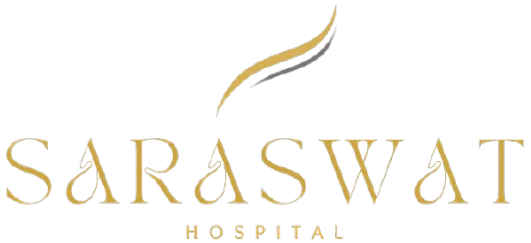
Relieve Pain with Expert Dry Needling Therapy
Relieve pain and restore movement with expert dry needling therapy at Saraswat Hospital. This advanced treatment targets muscle trigger points, alleviating tension, reducing inflammation, and enhancing mobility.
What is Dry Needling?
Dry needling is a therapeutic therapy that requires inserting thin, filiform needles into specific muscle tissues to reduce musculoskeletal pain and improve mobility. Unlike acupuncture, which is conventional Chinese medicine, dry needling targets myofascial trigger points. Whether you are struggling with chronic discomfort, muscle tightness, or any specific pain, our skilled and ABHRS-certified doctors are here to deliver the best possible care for your needs.
The term “dry” refers to the fact that these needles do not inject any substance into your body—they work solely by stimulating the muscle tissue. This stimulation can help release tension, increase blood flow, and reduce both local and referred pain, offering relief where you need it most.
How Does Dry Needling Work?
During the dry needling treatment, a certified therapist inserts sterile needles into the skin. This process aims to release muscle tension, minimize pain, and promote healing by increasing blood flow. Our trained professionals follow a precise process to ensure minimal discomfort and optimal results:

1. Evaluation
We begin with a thorough assessment of your symptoms, mobility, and muscle function to identify trigger points contributing to your pain.

2. Needle Insertion
Using sterile, thin monofilament needles, our experts gently insert them into the affected trigger points. You might feel a slight prick or a muscle twitch—this is a positive sign that the treatment is working.

3. Muscle Response
The needle stimulates the muscle, prompting it to contract or relax. This helps flush out tension, improve circulation, and trigger your body’s natural pain-relieving mechanisms, such as the release of endorphins.

4. Complementary Care
Dry needling is often paired with other therapies, such as exercises or manual techniques, to enhance recovery and prevent future issues.
The procedure typically lasts a few minutes, with needles remaining in place for anywhere between 10 seconds to 20 minutes, depending on your condition and treatment goals.
Conditions Treated with Dry Needling
Dry needling is a versatile therapy that can address a wide range of musculoskeletal conditions. At Saraswat Hospital, we use it to treat:
- Neck and Back Pain: Ease stiffness and discomfort caused by poor posture or injury.
- Shoulder Pain: Relieves issues like rotator cuff pain or biceps tendinitis.
- Headaches: Reduces tension-related headaches and migraines.
- Tendonitis: Treat conditions like Achilles tendinitis or tennis elbow.
- Hip and Knee Pain: Improves mobility and reduces discomfort from overuse or injury.
- Muscle Strains: Speed up recovery from sports injuries or everyday wear and tear.
- Temporomandibular Joint (TMJ) Pain: Alleviate jaw discomfort and tension.
- Sciatica and Nerve Pain: Address radiating pain caused by muscle tightness.
- Sports Injuries: Muscle strains, ligament sprains, or overuse injuries are common in athletes.

Benefits of Dry Needling
Choosing dry needling offers numerous benefits and advantages, including the following:
- This process targets the root cause of discomfort and gives you relief from pain.
- It improves mobility by releasing tight muscles to restore your range of motion.
- A safe and effective alternative to pain management with minimal discomfort.
- You can expect quick recovery or notice improvements after 1-2 sessions.
Our experienced doctors combine dry needling with a holistic approach, ensuring you receive the best possible care for long-term wellness.
Dry Needling vs. Acupuncture: What’s the Difference?
While dry needling and acupuncture both use thin needles, they serve different purposes:
- Dry Needling: Focuses on relieving musculoskeletal pain by targeting trigger points. It’s a modern technique often used as part of a broader physical therapy plan.
- Acupuncture: Aims to balance energy flow (chi) through meridians to treat a wide range of conditions, including pain, stress, and fatigue. It’s based on ancient Eastern practices.
What to Expect During Your Session
Dry needling is a safe and effective procedure, and most patients report little to no discomfort. An individual may feel a slight pinch as the needle gets inserted, followed by a brief twitch as the muscle responds. This is normal and often a sign that the therapy is effectively treating the area.
Post-treatment, some mild soreness may occur for a day or two, similar to the feeling after a good workout. However, our team will provide you with aftercare tips to keep you comfortable as your body heals.
Is Dry Needling Right for You?
Dry needling is a safe and effective option for many, but it’s not suitable for everyone. It may not be recommended if you:
- Have a fear of needles or are not able to consent to treatment.
- If you are experiencing an acute medical emergency.
- Have any certain health condition.
Final Thoughts
If you’re experiencing muscle pain or mobility issues and are considering dry needling therapy, contact Saraswat Hospital to schedule a consultation. Our team is dedicated to helping you achieve optimal health and well-being through effective and evidence-based treatments.
Note: Individual results may vary. A consultation with our healthcare professionals is essential to determine the most appropriate treatment plan for your specific condition.
Certifications & Partnerships

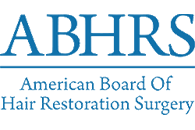
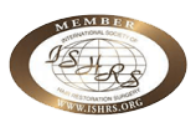
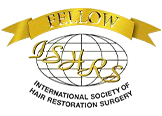
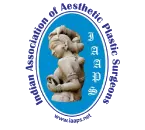
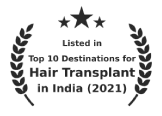



The Saraswat Hospital Credentials

17000 +
Happy Clients

20 +
Years of Experience
98%
Hair Growth Rate
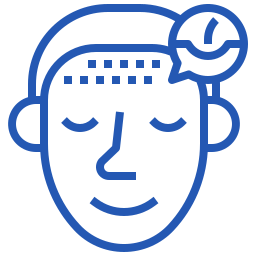
1500 +
Cases of Grade 5/6

4.9
Google Ratings
EXCELLENTTrustindex verifies that the original source of the review is Google. Very happy with my decision to choose Saraswat hospital. Great staff and excellent aftercare.Posted onTrustindex verifies that the original source of the review is Google. Excellent treatment with good results and entire staff treated very friendly nature. I am 100% satisfied.Posted onTrustindex verifies that the original source of the review is Google. Taking PRP session here, got great results and good professional treatment..Posted onTrustindex verifies that the original source of the review is Google. Very professional service and great results.Posted onTrustindex verifies that the original source of the review is Google. Excellent experince overall. Minimal pain, quick recovery and my hairline looks fantastic.Posted onTrustindex verifies that the original source of the review is Google. Amazing results. My hair feels healthier, thicker and stronger after the treatment thank you Dr Saraswat Sir.Posted onTrustindex verifies that the original source of the review is Google. Dr Saraswat is truly gifted. Our baby's cleft lup surgery turned out beautiful. And we are so thankful for the care and kindness we received.Posted onTrustindex verifies that the original source of the review is Google. Outstanding care from dr and team. The surgery was a success and our child's smile say it all. Highly recommend.Verified by TrustindexTrustindex verified badge is the Universal Symbol of Trust. Only the greatest companies can get the verified badge who has a review score above 4.5, based on customer reviews over the past 12 months. Read more
